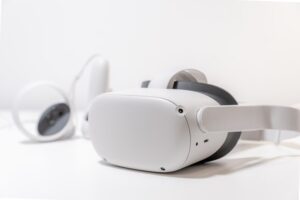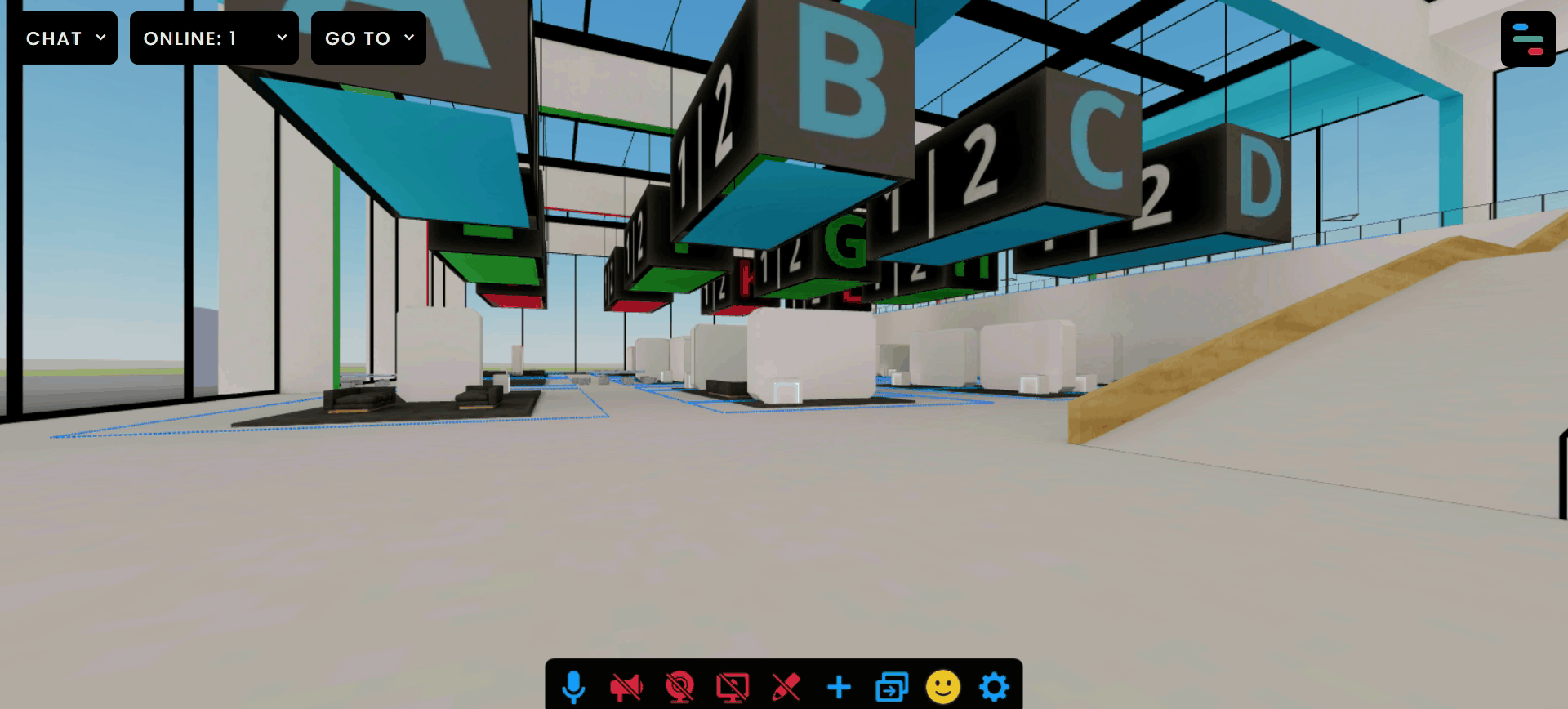Trending Today
Get the Tips: Marketing
for 7-Figure Growth
for 7-Figure Growth
Get solid marketing strategies, designed for entrepreneurs on the track to 7-figures and beyond, right in your inbox.

Virtual reality marketing is a new and exciting way to reach customers. But what is it, exactly? VR marketing is the use of virtual reality technology to create an immersive experience for customers. This can be done in a number of ways, such as through virtual reality headsets, 360-degree videos or 3D images.
Virtual reality can be used to create ads, customer experiences or even product demonstrations. It offers businesses a unique way to connect with customers and create an engaging experience that will keep them coming back for more.
Plus, during the Covid pandemic, we’ve seen that businesses have pivoted online and are looking for creative ways that make online options a rich experience for their audience. What it’s not is simply streaming a video on your website surrounded by some text and a chat box – which is what so many bigger companies (who could have done so much better) pivoted their events to during the past two years.
New technology can seem overwhelming, but we’ve been in the 3D and VR space for over a decade and have helped even solo entrepreneurs take advantage of VR opportunities that were more affordable and easier to implement than you would think.

Virtual reality marketing is an exciting way to reach customers. But what is it, exactly?
VR marketing is the use of virtual reality technology to create an immersive experience for customers. This can be done in a number of ways, such as through virtual reality headsets, 360-degree videos or 3D images.
VR marketing can be used to create ads, customer experiences or even product demonstrations. It offers businesses a unique way to connect with customers and create an engaging experience that will keep them coming back for more.
The benefits of virtual reality are many. Perhaps the most obvious benefit is that it allows businesses to connect with customers in a new and exciting way. VR marketing is immersive, engaging and memorable, which means that customers are more likely to remember your brand and what you have to offer.
VR marketing is also a great way to improve customer engagement. Studies have shown that VR marketing can increase customer engagement by over 200%. This means that customers are more likely to interact with your brand and explore what you have to offer.
Virtual reality marketing is also a great way to improve brand awareness. With a virtual reality marketing campaign, you can reach a wider audience than ever before. And thanks to the immersive nature of VR, customers are more likely to remember your brand and what you have to offer.
Plus, VR marketing is a great way to boost sales. Thanks to the immersive nature of VR, customers are more likely to make a purchase after experiencing your product or service in virtual reality.
If you’re looking to get started with virtual reality marketing, here are a few tips to help you get started:
1. Start with a plan. Like any other marketing campaign, you need a plan before you start. And the plan will 100% start with understanding your audience and what your goals are. Decide what you want to achieve with your VR marketing campaign and create goals that are realistic and achievable.
2. Choose the right VR technology. Not all VR technology is created equal. Choose the type of VR technology that will best suit your needs and goals. You also need to consider if you want the experience to be restricted to VR headsets and goggles, or also available on desktop and mobile – there are pros and cons to both.
3. Create engaging content. The key to a successful virtual reality marketing campaign is engaging content. Make sure your content is exciting, interesting and relevant to your customers.
4. Test and experiment. Don’t be afraid to test different types of VR content and experiences. Try different things and see what works best for your business.
5. Measure your success. Like any other marketing campaign, you need to measure your success to determine if virtual reality is right for your business. Track your goals and KPIs to see if you’re meeting your targets.
Examples of successful VR marketing campaigns
An example of a successful VR marketing campaign is the virtual reality headset Oculus Rift. This headset was developed by Oculus VR, a company that was purchased by Facebook (now Meta) in 2014 for $2 billion. The Oculus Rift allows users to experience virtual reality in a way that is more immersive and engaging than ever before.
One of the first campaigns to use the Oculus Rift was a virtual reality ad for the movie “The Martian”. The ad allowed users to experience being on the red planet and see what it was like to be an astronaut. The campaign was a huge success and helped to promote the movie in a new and exciting way.
Since then, Oculus has been used by businesses all over the world to create unique VR marketing campaigns that are both immersive and engaging.
I own an Oculus Quest 2. My husband actually purchased this headset, downloaded whatever game he wanted to play, and never touched it again. I tried it out and happened across a VR workout that I absolutely LOVE - Supernatural - and have never given his headset back. I'm getting in shape while playing a fun game. They have recently been purchased by Meta.
Another example of a successful VR marketing campaign is the virtual reality app “The Walk VR“. The Walk VR is an app that allows users to experience what it’s like to walk on a tightrope between two skyscrapers. The app was created by Jaunt, a company that specializes in virtual reality content.
The app was a huge success and received over 1 million downloads in its first month. It also won multiple awards, including “Best Use of Virtual Reality” at the Cannes Lions International Festival of Creativity.
The Walk VR is just one example of how businesses are using virtual reality to create unique and engaging experiences for their customers.
As virtual reality technology continues to evolve and become more advanced, businesses will continue to find new and innovative ways to use it for marketing purposes. VR marketing is still in its early stages, so there is plenty of room for businesses to experiment and find what works best for them. But with the right planning and execution, VR marketing can be used by a business of any size.
So what’s the future of VR marketing? Here are a few predictions:
1. More immersive experiences. As virtual reality technology becomes more advanced, we can expect to see more immersive experiences that will make customers feel like they’re actually there. This will create an even more engaging experience that will keep customers coming back for more.
2. Greater use of virtual reality for marketing purposes. As virtual reality technology becomes more widespread, businesses will increasingly use it for marketing purposes. This will allow businesses to connect with customers in a new and exciting way that will boost sales and increase customer engagement.
3. More creative VR marketing campaigns. As virtual reality technology becomes more advanced, businesses will create more creative VR marketing campaigns that will engage and excite customers. These campaigns will be tailored to meet the specific needs of each business and will help to distinguish them from their competitors.
4. Greater use of virtual reality for training and education. Virtual reality can be used for a variety of training and educational purposes, and its use in these areas is expected to grow in the future. This will allow businesses to train employees in a safe and immersive virtual environment that is tailored to their specific needs.
5. More widespread use of virtual reality headsets. In the future, we can expect to see more virtual reality headsets becoming available to the general public. This will allow businesses to reach a larger audience with their virtual reality campaigns and create even more immersive experiences.
The possibilities are endless when it comes to virtual reality marketing. As the technology continues to evolve, we can expect to see even more innovative and creative uses for it in the future. So if you’re looking for a new and exciting way to connect with your customers, virtual reality marketing is definitely something you should consider.
Virtual reality marketing is a new and exciting way for businesses to get their product in front of more people. As virtual reality technology becomes more advanced, we can expect to see even more creative virtual reality campaigns that will excite customers and engage them with the business’s products or services.
If you’re looking for an innovative new channel through which to market your company, virtual reality marketing should be at the top of your list!
Even the smallest business can explore pivoting one existing campaign to a virtual hybrid. Schedule a free consultation and let’s explore the possibilities for your business.

Vicky is the CEO and Chief Creative Strategist of Vicky Wu Marketing. She draws from 30 years of experience at the CMO level, the CEO level, marketing for Fortune 500 companies and multi-million and multi-billion-dollar organizations, PLUS strategies learned helping startups and nonprofits with limited budgets … now focusing on providing SMBs with effective and efficient marketing strategies – giving them access to the same level of expertise as the really big guys with deep pockets, that they may not otherwise be able to access.
Get solid marketing strategies, designed for entrepreneurs on the track to 7-figures and beyond, right in your inbox.

